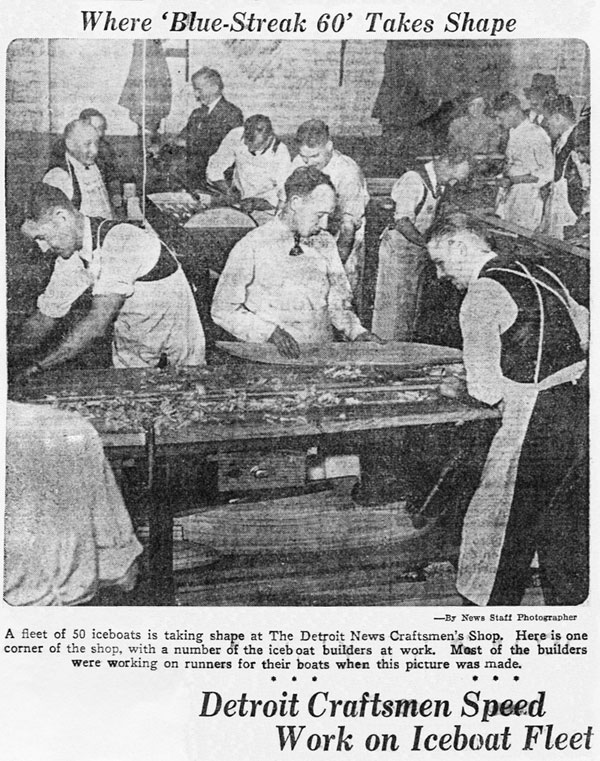Dear Fellow Icesailors,
As the year is coming to an end we would like to start a different type of countdown: 2024 will mark the 50th occasion that the DN Class celebrates international competition by organising the Gold Cup DN World and European Championships. In anticipation of this jubilee, we invite you to travel through the decades with us in the form of this weekly column from the very beginning of ice sailing to the present day. We hope you decide to take this trip down memory lane and check back in here every Thursday/Friday to get in the spirit of the regatta until the big event in February.

Print made by Claes Jansz. Visscher, 1608-10: Townsfolk. An Ice Yacht and Skaters on the Ice. Added as a border decoration to a map of the Province of Holland published by Pieter van der Keere in 1610.
THE BEGINNINGS OF ICESAILING
.jpg)
Ice boat on Saint Lawrence River, Quebec City, c. 1858–1860.
The history of icesailing dates back to the “Little Ice Age” through the 16th to the 18th century in Europe where smooth ice was found in the Baltic bays and the Dutch canals. There, due to a period of regional cooling climate, the grain traders’ boats needed to be equipped with planks and skates to continue trading in the prolonged 5-month winter. Notably, this is also the time when the later czar Peter the Great of Russia spent his years studying boatbuilding in Holland. In all likelihood, this is why in Eastern Europe the word given to iceyachting closely resembles the name of the typical boat type used for iceboats: the Dutch Boeier, a typical merchant vessel. (In Russian, the word for iceyachting is “buerny sport” – in Polish “bojery”.) While the modification with metal runners was initially motivated by commercial reasons, soon “ice yachts” evolved into a pleasure craft.
At the end of the 18th century, the custom of ice boating travelled together with the Dutch settlers to North America spreading it across the continent. Its growing popularity led to the formation of the first boating clubs in the 1860s. The New York and the Hudson River area provided a great nesting ground for the sport both geographically and financially.
Meanwhile, the first European ice sailing club was formed in 1901 in Sweden. By the beginning of the 20th century, Europe had an extensive network of iceboaters culminating in the form of the European Icesailing Union (Europäische Eissegel Union) founded by the German-Estonian Erik Von Holst in 1928 with member fleets in Latvia, Lithuania, Estonia, Sweden, Austria, and Germany.
BLUE STREAK 60

Snippet from the 1937 edition of the Detroit News
In the meantime, ice boats became much more sophisticated compared to how the Dutch Boeiers had fared on the ice. By the 19th century the heavy flat-bottomed sailboats evolved into slim boxes, riding on
cross-pieces, supported by runners. The wealthy of the Hudson River area quickly got acquainted with the fast-paced fun of ice sailing, commissioning architects to construct faster and more appealing ice boats employing up to seven crew members. Many designs appeared enhanced in their functionality and velocity–and also in their price.
By the 1930s, with the US in deep depression, a need emerged for an inexpensive home-buildable iceboat that can be assembled out of common lumber and simple hardware. Size and weight were also important aspects so that the iceboat could be easily loaded on the roof of a car, or fit it in the bed of a pickup truck. Such a blueprint won the Detroit News sponsored ice boat design contest in 1937. The prototype excelled on its test run, especially in light wind where many of its massive counterparts could not even move. That year the newspaper opened up its hobby shop to 50 builders who assembled the first fleet of these “Blue Streak 60” iceboats (as DNs were originally called).
Over the years the design was modified at the whim of the builders, and the name was changed to the DN 60. On February 21 and 22, 1953 the Detroit Ice Yacht Club sponsored a regatta to bring the DN skippers together to help form an association. A meeting of the skippers was held at this regatta where they outlined a constitution for the association with the first specifications to the DN boat design.

The original Blue Streak 60 blueprints
Tragically, in Europe, the Second World War and the rise of the Iron Curtain had a devastating effect with the destruction of the existing iceboat stock, but by the end of the 1950s with the possibility for more leisure, there came a general demand and revival of the sport throughout the continent.
This is when during his 1962 trip to North America the Dutch architect and established landsailor Kees Kortenoever brought DN drawings back with him to Europe. That same year Gerhard Jettmar of Austria joined the IDNIYRA as their first European member. The European introduction of the DN was quickly followed by emerging fleets in the Netherlands (H), Austria (OE), Germany (G), Sweden (S), Denmark (D), Belgium and Switzerland (Z). By the season of 1964-65, there were approximately 100 DNs on the continent. Most of the European sailors chose not to join the IDNIYRA, but to race with their sail numbers issued by their fleets with national identifiers.
Read More:
- The Little Ice Age on Wikipedia
- Iceboating on Wikipedia
- Blue Streak 60 by Paul Goodwin
- History of the DN
- DN Class History via DN North America
- Iceboat History Playlist on the DN Class YouTube Channel

Excerpt from the I.D.N.I.Y.R.A. newsletter of 1962 November 10, welcoming the first European member in the organisation.
Join us in the celebration by attending the 50. Gold Cup DN World & European Championships between 2024.02.3-10!
Visit the Regatta Page and make your Event Entry!

